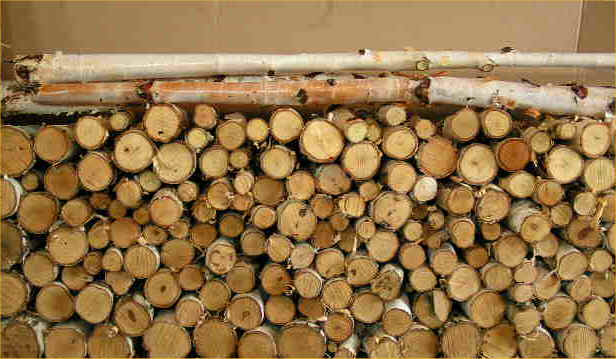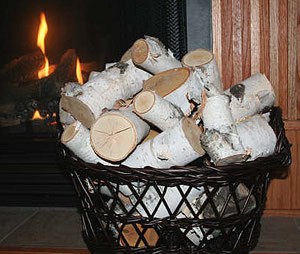FIREWOOD LOGS - Birch - A GUIDE TO BURNING FIREWOOD
.
Silver birch
The silver birch is a graceful and attractive tree with its light airy foliage and distinctive white peeling bark. It has been an inspiration to writers, poets and artists in every season throughout the centuries.
What other names does it have?
| Can also be known as |
|
|---|---|
| Generic name | Birch |
| Latin name | Betula pendula |
| Family name | Birch |
| Latin family name | Betulaceae |
What type of tree is it?
| Is it a broadleaf or conifer? | It is a broadleaf |
|---|---|
| Does it lose its leaves in autumn? | Yes, it is deciduous |
Species description:
| Average height | 18-25m |
|---|
Leaf
| Description | A very triangular leaf with 'double teeth' (the teeth have teeth) up straight sides |
|---|---|
| Shape | Heart/Triangular |
| Colour | Pale green |
| Colour of leaves in autumn | Golden-yellow |
| Leaf bud | Big, long, sharp buds on slender shoots |
| Leaf stalk | Long stalk |
| Leaf arrangement | Alternate |
| Leaf burst usually occurs | March-April |
Flower, seed, and fruit
| Type of flower | Catkin |
|---|---|
| Flowering season | April-May |
| Tree/flower sex | Both sexes |
| Fruit colour | Brown |
| Fruit season | September-October |
| Type of seed body | Catkin |
| Seeds dispersed by |
|
Bark and twig
| Bark description | White and papery bark with black cracks or fissures |
|---|---|
| Twig Description | Purple-brown with rough white spots on the shoots. The spots are particularly prominent on twigs that are in the sun |
What other trees are similar?
| Can easily be confused with? | Downy birch - which has slightly hairy stems and leaf stalks. The leaves of the downy birch are also more rounded and less strictly triangular |
|---|
Where is it usually found?
| Is it native or non-native to the British Isles? | Native |
|---|---|
| Where is its natural range? | Britain and Ireland |
| Preferred soil type or environmental conditions? | It prefers sandy or acidic soils although it is common in most conditions |
| What is its British conservation status? | Common |
Additional information
| Human uses of tree and timber | Birch has a number of human uses. The timber has traditionally been used in Scotland in houses, furniture, carts, ploughs, gates and fences. While other parts of the UK used to shun the use of birch except for its traditional use of broomsticks. Today, Birch timber has a variety of uses and large amounts of birch brushwood are used annually for racecourse jumps. Other parts of the tree were also useful. The bark was used for tanning leather and the sap was thought to have medicinal benefits for kidney stones and other ailments. The sap was also useful as it is a good source of sugar and can be brewed into beer or wine. Silver birch wine is still commercially made in Scotland. |
|---|---|
| Tree lore and folklore | Birch, the tree of Venus, has a number of properties associated with it. Birch is believed to protect against evil spirits and the evil eye but it also symbolises love and fertility. In medieval times, a bundle of birch twigs was carried by the local magistrate on his way to court as a symbol of his authority and as a means of correction. The use of the birch as a punishment probably originates in the need to drive out evil spirits. |


